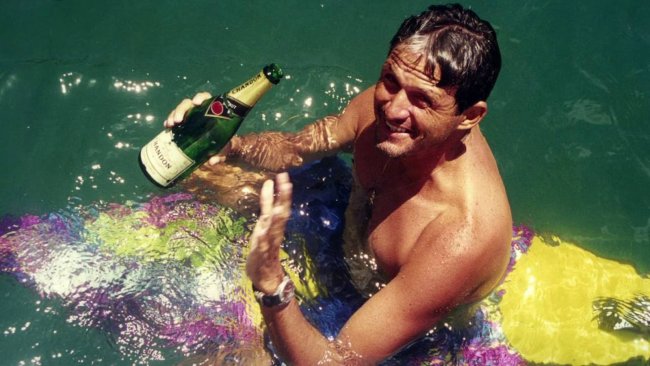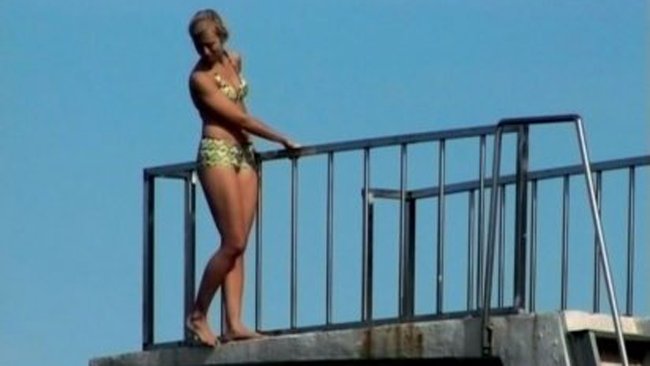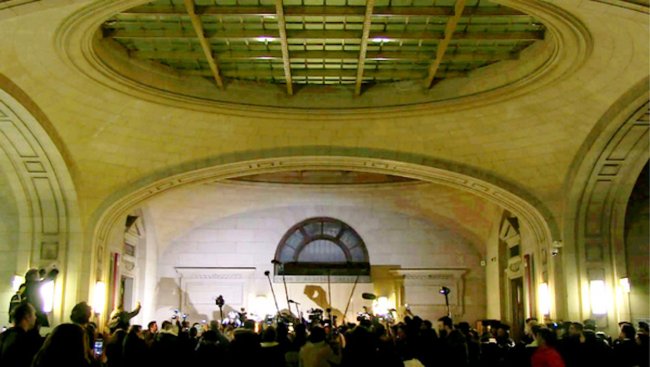One More Time With Feeling
[…] This is probably the reason for the camera to be moving constantly. It is as if it would pursue a personality, that of Nick Cave, which is both so incisive and so ungraspable.
[…] In the end we understand that this film is, for the Australian artist, a complement to what the album became: a way of putting the mourning process into words and to make it public in an attempt to sublimate the trauma in poetry and music.
Text: Giuseppe Di Salvatore

At first we don’t understand exactly what is going on in this black-and-white 3D movie. Of course we quickly understand that Andrew Dominik is filming the making-of of Nick Cave’s last album, Skeleton Tree, but we also clearly feel a constant hesitation – and not only because the camera is almost always in motion. The only focus of attention is Nick Cave himself, and we are under the impression that even if we get nothing more than his sheer presence, this magnetic presence is incredibly enough…
A conversation starts in the car; and this sort of interview-situation comes back later to give some rhythm to a film that, otherwise, has almost no structure – or has the ductile structure of improvisation. Nick Cave appears also as a voice-over, commenting on the film material we are watching. The long scenes of the rehearsal, the wonderful pieces of music, and the analysis in the studio with a huge recording console: all of the film is an intertwining of layers. The preparation, the improvisation, the listening and the reflection on what has been recorded, the reflection on its meaning and on the meaning of the whole process. Andrew Dominik’s filmic layers cross in and out of the many layers of the rehearsal process and, at the same time, they go in and out of the many layers of the personal and artistic life of Nick Cave. This is probably the reason for the camera to be moving constantly. It is as if it would pursue a personality, that of Nick Cave, which is both so incisive and so ungraspable. In this way, we can understand the doubtful choice of shooting with a 3D camera (whose images remain definitely surreal to my perception): it is the expression of the effort to catch, with images, an existential force that finds its principal form in words and a voice or, better, in Nick Cave’s characteristic voicing the words.
In One More Time with Feeling, the deeds are somehow repetitive and we gradually discover that the daily work is, for him, a kind of yogic activity that gives some structure to his ravaged soul. Nick Cave tragically lost one of his two twin sons during the preparation of the album and, in the middle of the film, we understand why the word “trauma” comes back so often as a heavy stone in the centre of his life and in the centre of this film. In the end we understand that this film is, for the Australian artist, a complement to what the album became: a way of putting the mourning process into words and to make it public in an attempt to sublimate the trauma in poetry and music. Therefore, there is a peculiar continuity between the images in which Cave is finally able to relay what he and his family have gone through to Dominik’s camera and the images that try to express the creative process of conceiving a song and singing it – always through the collaboration of a team of musicians, The Bad Seeds, engineers and technicians, all of whom we can sense are like a second gentle family to him.
Even if this tragic situation brings some darker connotations and tonalities to the mood of the film, Nick Cave’s inspiring words and creativity that the film is able to bring forward make of One More Time with Feeling a journey of beauty. The initial hesitation we felt now has a specific meaning: it is from this existential uncertainty that the poetic word can blossom in all its suggestive power.
This article contains a third-party video. If you would like to watch the video, please adjust your settings.



